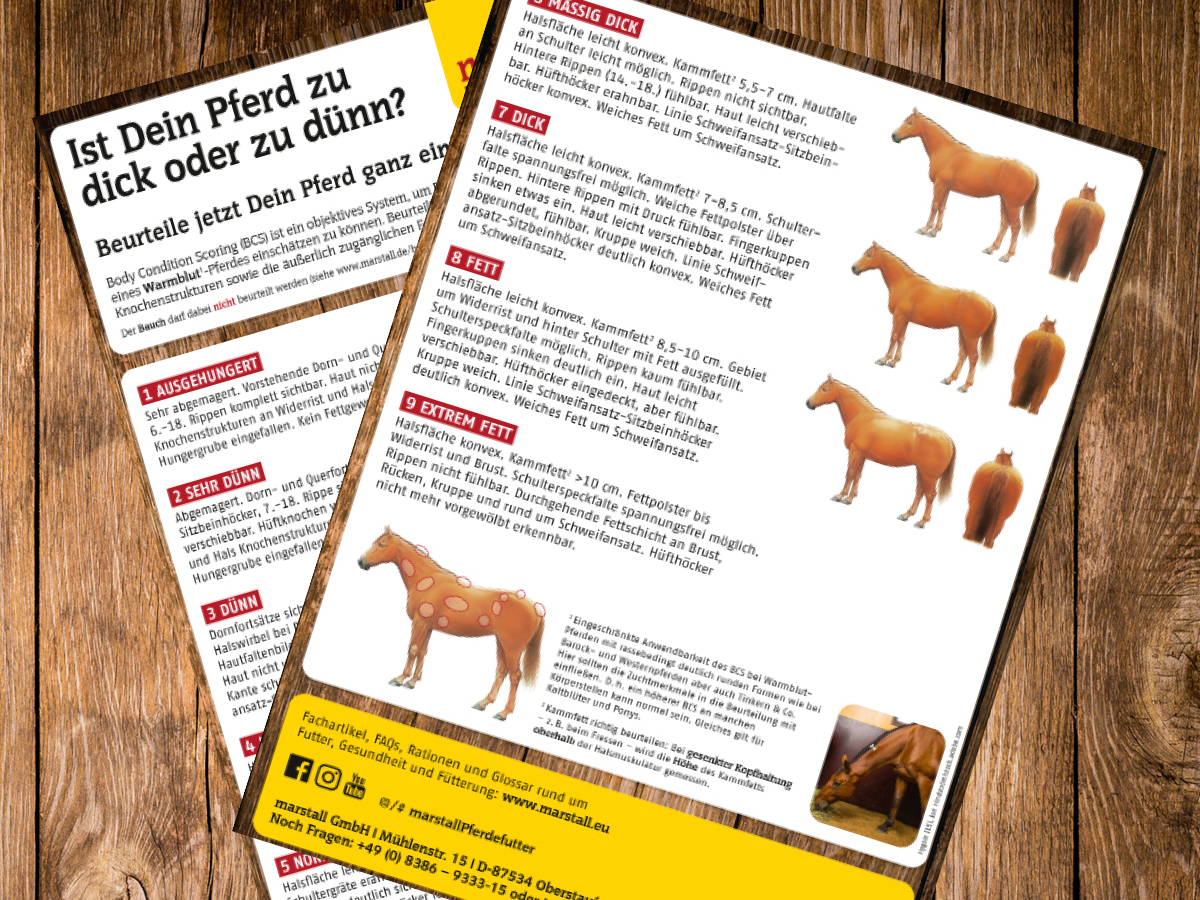BCS in horses and what is assessed and how?
What exactly is the BCS (Body Condition Score) of horses? Which parts of the horse's body are included in the evaluation and which are not? What do you have to pay attention to when assessing the areas? Answers to these questions are given in this article.
- Definition of BCS in horses
- Big belly - fat horse?
- Calculate the right amount of feed with BCS
- How do you measure BCS?
- The BCS is determined here
- For which horses is this BCS system applicable?
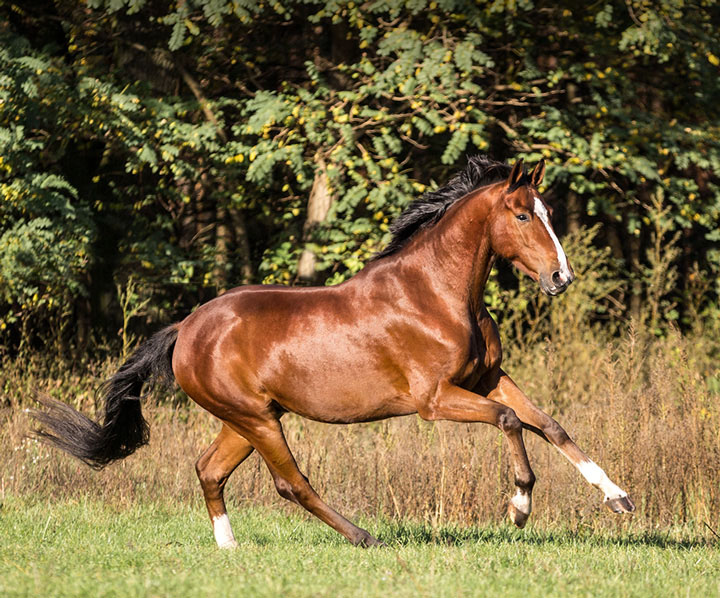
Body Condition Scoring determines whether the horse is thin, normal or fat. This allows important conclusions to be drawn about feeding.
Definition of BCS in horses
The Body Condition Score (BCS) shows the nutritional status or body volume of a horse. Six defined body regions are assessed for this purpose: Neck, shoulders, ribs of the chest, back and croup, hip humps and the line between the tail base and ischial tuberosity. To determine the BCS, fat reserves and bone structures are palpated and assessed. In this way you can find out quite reliably whether your horse is too fat or too thin or whether it is completely normal. If you know the BCS and measure other body measurements, you can also determine your horse's weight relatively accurately without using scales. This information will help you and us in the consultation to adjust the feeding and feed quantity exactly to your horse.
Big belly - fat horse?
It is almost impossible to judge the weight of a horse at a single glance. Only extremely thin or thick horses can be recognised at first glance. Above all, one should never be irritated by the belly size of a horse. After all, a horse's belly says nothing about its fat reserves. The belly size varies greatly depending on how the colon is filled. This is then called a pasture belly or hay belly. A large belly, but it can also be the result of incorrect training or slack abdominal muscles.
Calculate the right amount of feed with BCS
From the Body Condition Score and some measurements of the horse the body weight can be calculated quite accurately - practical if you don't have a scale at hand.
Formula for weight calculation:
Body weight (kg) = -1160 + 1.538 x body circumference (cm) + 1.487 x neck circumference (cm) + 2.594 x height at withers (tape measure, cm) + 1.336 x chest circumference (cm) + 6.226 x cane bone circumference (cm) + 13.631 x BCS (steps).
From body weight and BCS you can then determine the right amount of feed for your horse. Especially with very thin or very thick horses the body weight alone is not sufficient. Especially not if the aim is to gain or lose weight.
How do you measure BCS?
There are several ways to determine the BCS in horses. For warm-blooded horses we use a very precise system according to Kienzle&Schramme. Six body regions are individually assessed on a scale from 1 to 9. The average of the individual scores then results in the horse's Body Condition Score. A BCS of 5 to 6 is ideal. Most horses have a BCS between 4 and 7. To simplify a first evaluation of your horse we have simplified the scale from 1 to 9.
Simplified BCS classification
BCS 1 bis 3 | zu dünn |
BCS 4 bis 6 | normal |
BCS 7 bis 9 | zu dick |
"Is yourhorse to thick or to thin?" you will find the exact classification and assignment of BCS 1 to 9 - also for printing.
The BCS is determined here
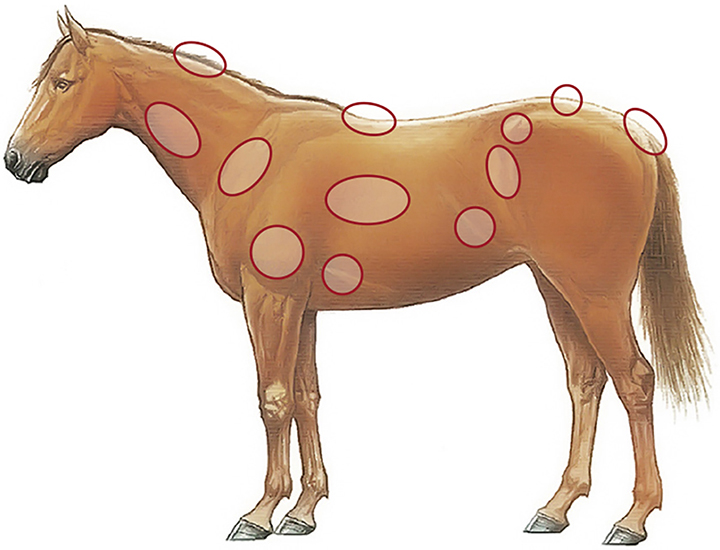
To determine the Body Condition Score in the horse, these body regions are assessed.
Neck
First look at theside of the neck. If it is concave, this corresponds to a BCS of 1 to 3, depending on the curvature. A slightly convex neck surface is normal. The more convex the neck surface is, the higher the BCS between 7 and 9.
You can also measure the height of the fat on the neck. The horse has lowered its head and you measure the distance from the top line of the neck muscles to the mane crest.
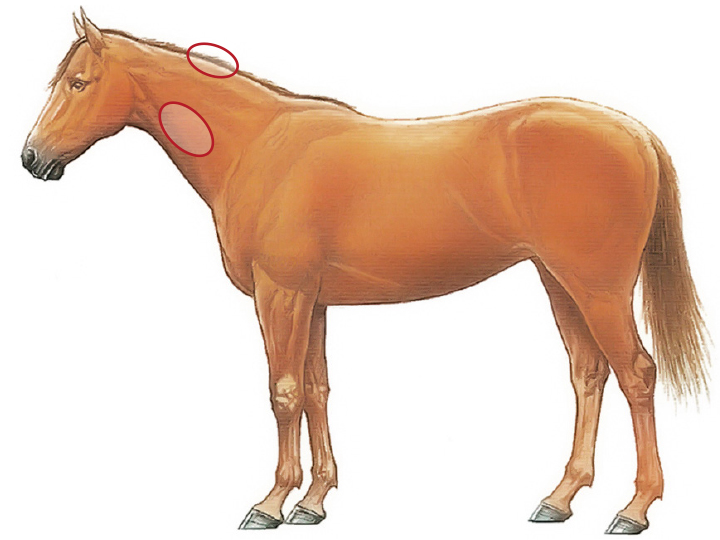
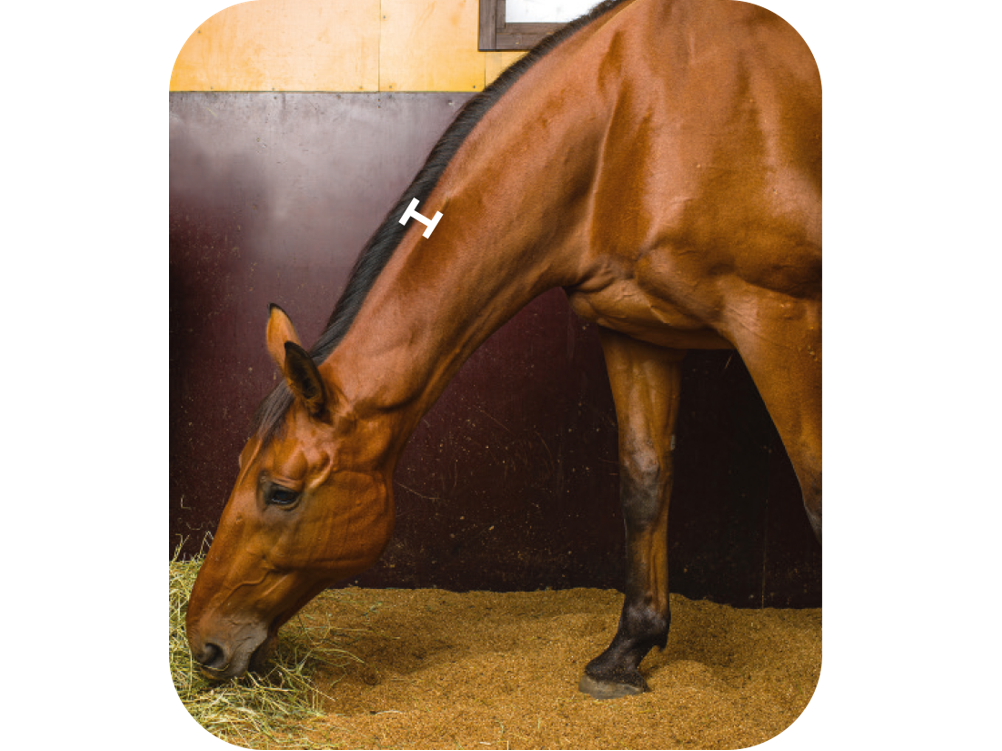
Shoulder
The horse'sshoulder blade runs diagonally from the withers towards the chest. In the thin or normal horse, the shoulder bone can be seen or sensed and can be felt easily. The next step is to try to grasp a fold of skin with two fingers, which is not possible with a skinny horse and only under tension with a normal horse. In the thick horse this is very easy and without tension.
At the girth position the front ribs (7th and 8th rib) of a thin horse are easy to see, on a normal horse only indistinctly. If the horse is too fat, these ribs are covered with a layer of fat and can no longer be felt. A skin fold can also be formed here in a normal and too thick horse.
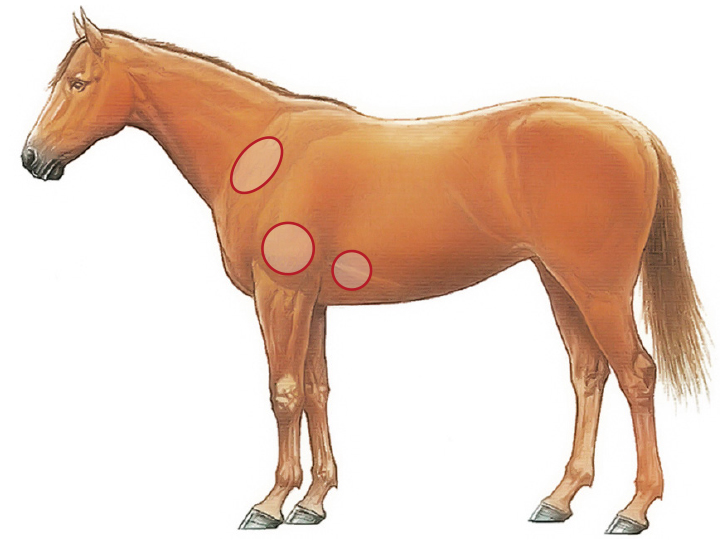
Chest wall and flanks
If you move your hand further back along the chest wall, the ribs are easy to feel but not clearly visible in normal nutritional status (BCS 5 to 6). Ribs are visible in horses that are too thin (BCS 1 to 3). The further forward these visible ribs are, the thinner the horse is. In horses that are too thick (BCS 7 to 9), the subcutaneous fat tissue lies so thick on the ribs that they can only be felt with pressure or not at all. The fingertips sink in considerably.
In the rear part of the abdominal wall, the skin cannot be moved in the horse that is too thin. With a normal BCS, i.e. between BCS 5 and 6, the skin can be shifted slightly to slightly. With a very fat horse, you can grasp a fold of skin or fatty tissue with tension.
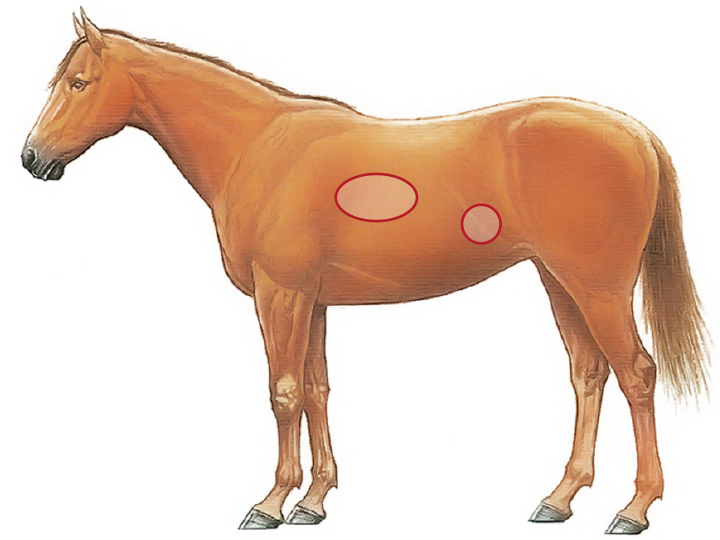
Back and croup
The dorsal appendages of the spine are only visible when the horse is too thin.
In a normal horse the skin is slightly movable, in a horse that is too thick, but not in a thin horse.
The croup feels soft when the horse is too thick and is convex (bent outwards). Even in otherwise thin horses the croup can look hump-like, which can be a first indication of EMS.
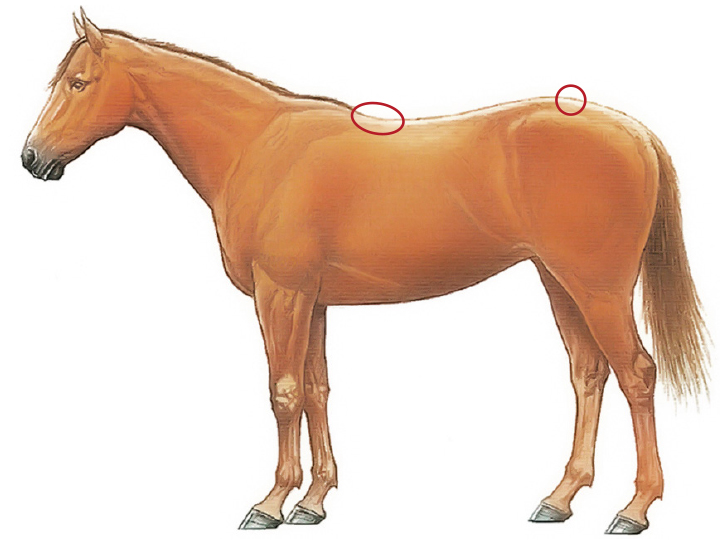
Hip
Directly in front of the hip, the horse's flank is arched inwards. This curvature is called "hunger hole". If this hunger hole can be seen, the horse is not fat. If it is filled with fatty tissue and not visible, the horse is fat.
The hip hump of a thin horse is clearly protruding and the front edge (pointing towards the head) is sharply defined. In normal nutritional condition the hip hump is clearly visible, but the edges are rounded. The thicker the horse, the less visible the hip hump is, but it can only be seen and felt.
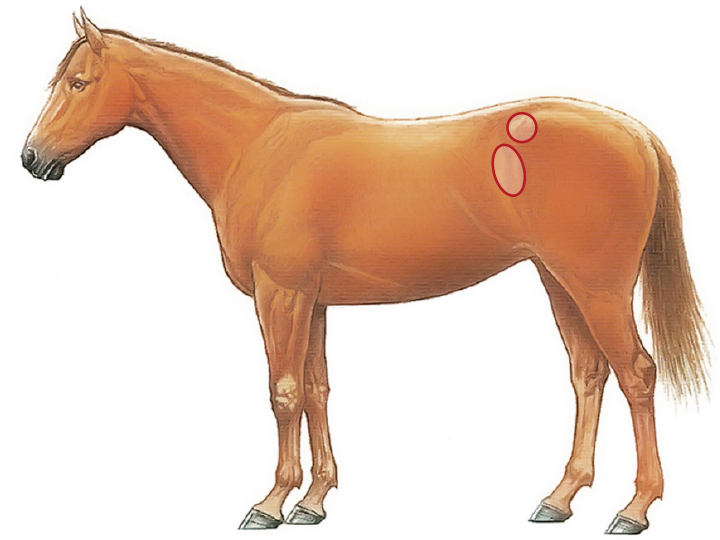
Tail base and ischial tuberosity
The ischial tuberosity is just below the base of the tail and points to the rear. On a normal horse it cannot be seen, only felt.
The line from the base of the tail to the ischial tuberosity is straight in the normal horse (BCS 5), concave in the too thin horse (arched inwards) and convex in the too thick horse (arched outwards).
Around the base of the tail, the firm muscle tissue (possibly even the vertebrae) of a thin horse can only be palpated with pressure. On a normal horse, there is a slight amount of fat around the tail and it feels slightly spongy. In thick horses the tissue around the tail is very soft and can be easily pressed in.
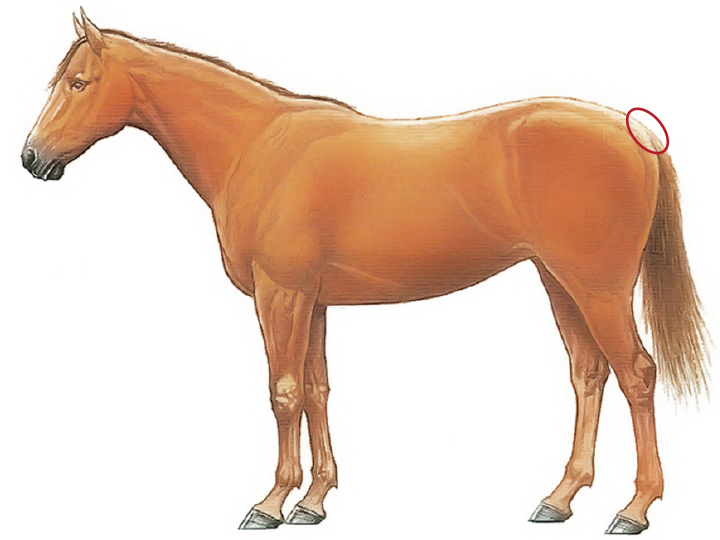
For which horses is this BCS system applicable?
In general, this system was developed for warm-blooded animals. Cold-blooded animals and ponies can only be assessed with this BCS system on a tendency basis. Cold-blooded horses with normal BCS often have more comb fat and a split croup. Ponies and "robust breeds" often appear more rounded due to their stocky build. Therefore, the hip region, for example, should be assessed differently.
Although the BCS system was developed for warmbloods, there are some limitations for warmblood horses with typical body shapes of the breed. The following pictures show a few typical examples. As far as such peculiarities exist, these individual body regions must be evaluated in a relative way.
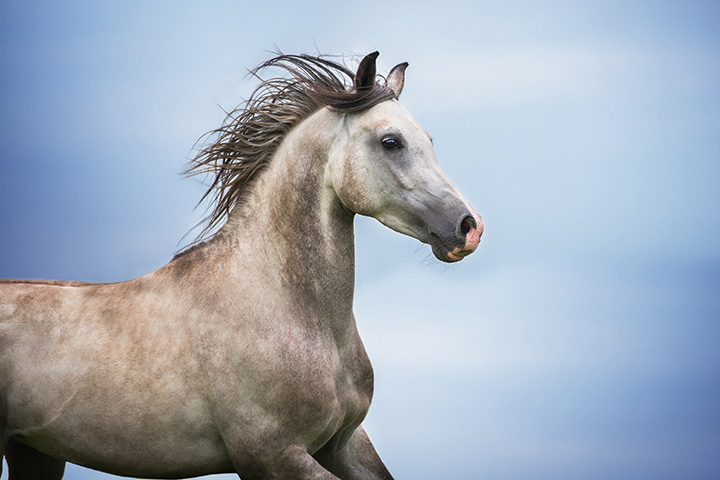
The "axe blow" in Arabians and Thoroughbreds, which according to the BCS evaluation system for warmbloods only occurs in horses that are too thin (BCS 1 to 4).
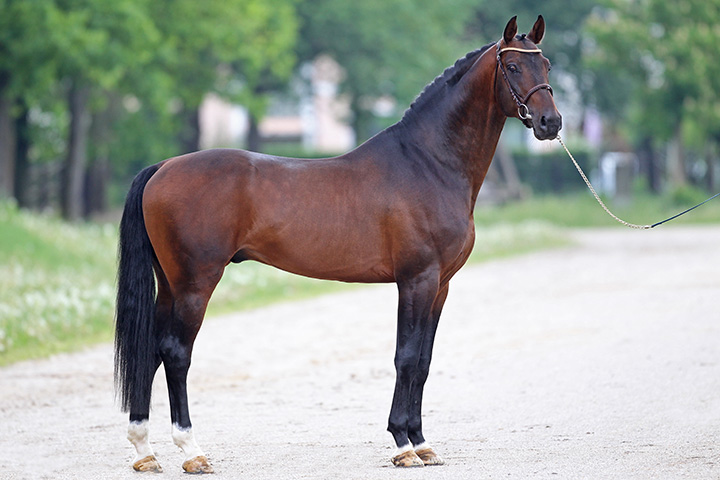
Stallions naturally have more comb fat (stallion neck) than mares or geldings.
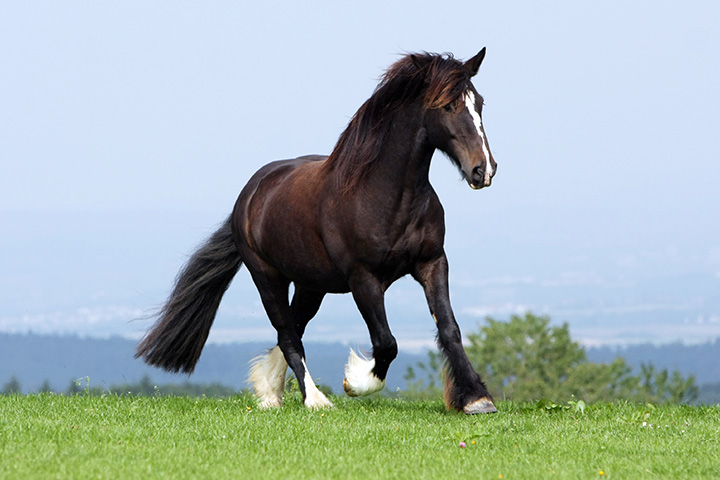
The " splitted croup" or "gutter" is, for example, in the Irish Cob (Tinker) not a sign of fat deposits, but of good musculature.
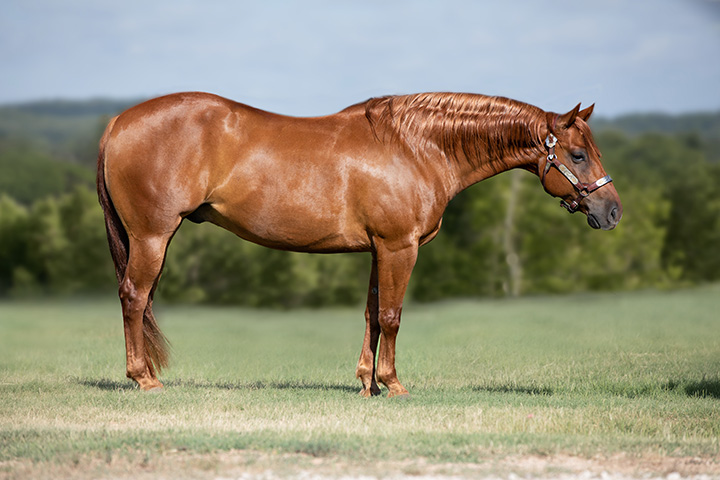
"Round hips" are desired for "baroque horses", for example. Also with American breeds like the Quarter Horse, the hips are rounder due to the strong muscles of the hindquarters.
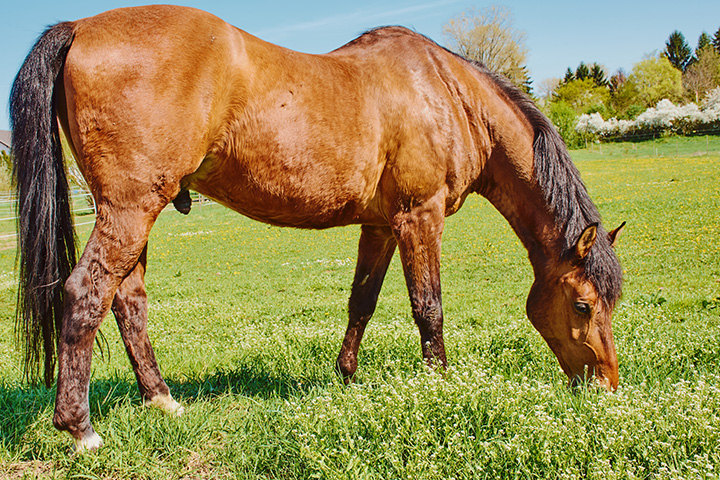
In old horses the fatty tissue decreases disproportionately in some areas, for example at the withers.
Literature
- Kienzle E, Schramme SC, 2004. Beurteilung des Ernährungszustandes mittels Body Condition Scores und Gewichtsschätzung beim adulten Warmblutpferd. Pferdeheilkunde 20 (2004) 6 (Nov/Dez) 517-524
- Kathrin Irgang. Videos zur BCS-Bestimmung https://www.youtube.com/watch?v=Ct3AHEfKjA0

